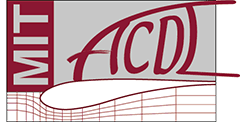Abstract:
The purpose of the talk is a comprehensive discussion of the features a turbulence model proposed for Reynolds-Averaged Navier-Stokes (RANS) CFD must or preferably should possess, first in order to be properly implemented numerically, and second to be relatively accurate in a wide range of applications, and become widely used. The need for this discussion is reinforced by the current wave of Artificial Intelligence and Machine Learning (ML) proposals, which brings into the field researchers with little “turbulence culture” (the subset of turbulence modeling culture is itself even more confusing). It is all too easy to conduct a “successful” ML project that gives an object that is, simply, not a turbulence model. Although a universal model will obviously never be created, it is argued that specialized models are undesirable, considering that models are expected to function well with a single formulation in all regions of a complex flow: boundary layers, free shear flows, vortices, and so on. The requirements range widely, from the obvious and absolute one of dimensional analysis to some which could seem minor, such as version control. Of particular interest but often ignored is the interaction between turbulent and inviscid regions; it is imperative to determine the structure of the solution at the interface, and for the turbulent ramp to propagate into the inviscid region. These considerations play a role in the sustained success of the Menter-SST and Spalart-Allmaras models. A detailed discussion of the quantities that are valid inputs to the model equations, whether traditional or via ML, is given. In particular, it is argued that the acceleration and associated pressure gradient are not valid inputs, contrary to many recent papers. The same applies to streamline curvature, which is not Galilean-invariant. Future directions are outlined.
Bio:
Philippe Spalart studied Mathematics and Engineering in Paris, and obtained an Aerospace PhD at Stanford/NASA-Ames in 1982. Still at Ames, he conducted Direct Numerical Simulations of transitional and turbulent boundary layers. Moving to Boeing in 1990, he created the Spalart-Allmaras one-equation Reynolds-Averaged Navier-Stokes turbulence model. He wrote a review and co-holds a patent on airplane trailing vortices. In 1997 he proposed the Detached-Eddy Simulation approach, blending RANS and Large-Eddy Simulation to address separated flows at high Reynolds numbers with a manageable cost. He became a Boeing Senior Technical Fellow in 2007, was elected to the National Academy of Engineering in 2017, and had the AIAA Reed Award for 2019. Recent work includes refinements to the SA model and DES, computational aeroacoustics, theories for aerodynamics and turbulence, and the design of research experiments.

